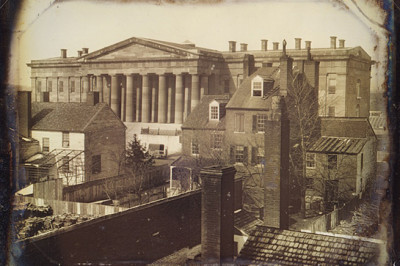



It happens more often than you might think; someone contacts the United States Patent and Trademark Office (USPTO) by phone, email, or sometimes even in person, and says, “I’ve got an old patent. What should I do with it?” The answer is, it depends.
Sometimes old patents are found in trunks, suitcases, or briefcases left behind by a family member or distant relative; other times, they are found in the back of a picture frame bought at a yard sale, estate sale or auction. However it happens, finding a patent can be exciting but also confusing as to what to do next. Is there value in the document? How should it be preserved? Should I contact the USPTO?
Individuals who find patent documents that appear to be old and historic in nature are encouraged to search the database of U.S. patents on our website to determine if the USPTO has record of the patent in its electronic database. In all likelihood, it is included in the archive of U.S. patent documents, but in certain instances that may not be the case. For example, in 1836, a fire destroyed the Patent Office. All records of patents issued to that point (some 10,000) were lost to the government. These patents are referred to as “X” patents. Over the years, the USPTO has been able to reconstruct a small portion by making copies from still-existing patents retained by the inventors. In some cases, the patents have been held in the family and passed down for over a hundred or even two hundred years.
If you’re unable to determine whether a patent is in the USPTO patent database, contact the Office of Innovation Development by email or call us at 571.272.8877 for assistance. When an individual brings an X patent document not already in the USPTO database to the attention of the office, the USPTO will work with the document’s owner to obtain a copy of the document so that it may be added to the electronic database for the use and enjoyment of all.
So what can be done with a historic patent document (and one presumably not still in force due to its age)? Obviously you could choose to keep the document because of its sentimental significance, whether it is a familial or personal connection to the inventor, or simply because you appreciate historical documents. There are also numerous avenues for selling historical documents, including specific historic document sellers, online auction sites, and antique shops. A historic patent owner might also consider gifting or donating the document. To whom, you might ask? How about the company to which the patent was assigned, if any, or a local museum associated with the life of the inventor. The Library of Congress, the National Archives and Records Administration, and even the Smithsonian Institution are also good candidates depending on the significance of the inventor or the invention. The federal government and most museums have set policies—usually available on their websites—regarding gifted objects and artifacts.
If you also happen to be in possession of related artifacts, news articles, or photographs associated with the inventor or invention, keeping these associated with the patent document can add more value to the sale or gift of the patent document. Though patents often include interesting contextual details, related items help tell a more encompassing story beyond what is found in the technical and legal language of the patent. They can help to bring to life the success or failure of the inventor or invention, the role it played in a community or industry, and perhaps how it may have influenced the creation of new or different technologies.
To best care for a historic patent, there are many good online sources for tips and tools for the care and conservation of documents. One recommended site is the U.S. Library of Congress, which provides information for the care, handling, and storage of works on paper. Additionally, the National Archives and Records Administration provides detailed information on how to preserve family papers and photographs.
A U.S. patent is an exceptional piece of American history. It serves as a lasting record and reminder of the novel creation by an inventor, or group of inventors, who successfully participated in the promise of the U.S. Constitution to “promote the progress of science and useful arts, by securing for limited times to authors and inventors the exclusive right to their respective writings and discoveries.” Anyone in possession of one of these historic gems has a truly unique antique to share and enjoy.
The USPTO gives you useful information and non-legal advice in the areas of patents and trademarks. The patent and trademark statutes and regulations should be consulted before attempting to apply for a patent or register a trademark. These laws and the application process can be complicated. If you have intellectual property that could be patented or registered as a trademark, the use of an attorney or agent who is qualified to represent you in the USPTO is advised.